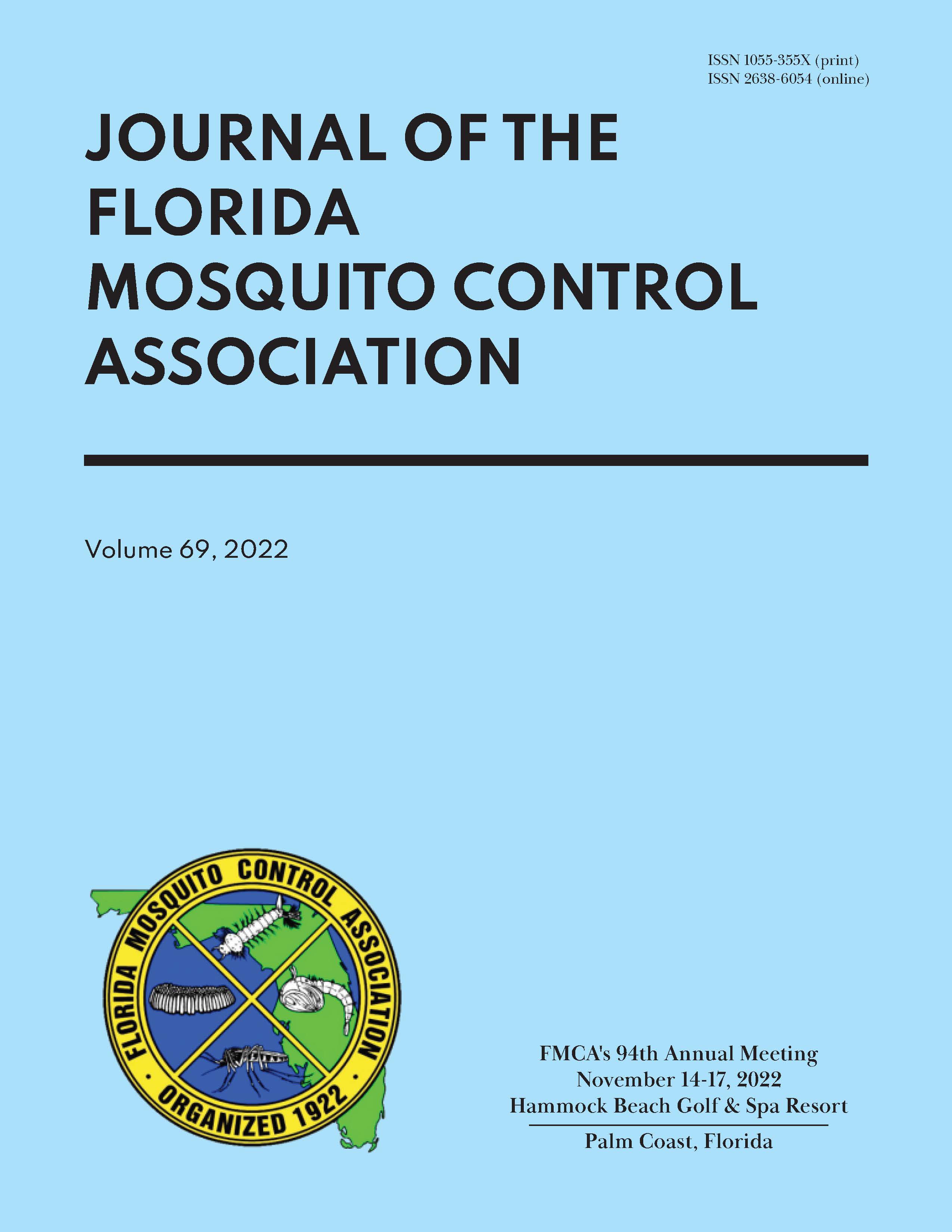TWO NOVEL SINGLE NUCLEOTIDE POLYMORPHISMS IN THE VOLTAGE-GATED SODIUM CHANNEL GENE IDENTIFIED IN AEDES AEGYPTI MOSQUITOES FROM FLORIDA
DOI:
https://doi.org/10.32473/jfmca.v69i1.130622Keywords:
Aedes aegypti, kdr, Florida, SNP, pyrethroid, resistanceAbstract
Aedes aegypti, the primary vector of dengue, Zika, chikungunya, and yellow fever viruses, is known to be resistant to pyrethroid-based insecticides in Florida. To improve our knowledge on the mechanism(s) responsible for this resistance, we sequenced 106 Ae. aegypti individuals collected from throughout Florida and examined mutations in a known insecticide resistance gene, voltage-gated sodium channel (VGSC; AAEL023266), also commonly known as the knockdown resistance (kdr) gene. Through whole genome sequencing, we identified 2 novel nonsynonymous single nucleotide polymorphisms (SNPs), F174I and E478K, and 5 known SNPs, V410L, S723T, V1016I, D1763Y, and Q1853R, of which 4 were reported in Floridian Ae. aegypti for the first time. These SNPs provide a basis for further studies examining their contribution to pyrethroid resistant phenotypes, such as increased time of survival after insecticide exposure. This sequence data can be used to develop a multiplex genotyping assay to investigate the SNP frequencies in a larger number of samples and to examine their phenotypic contribution to pyrethroid resistance in Ae. aegypti.


